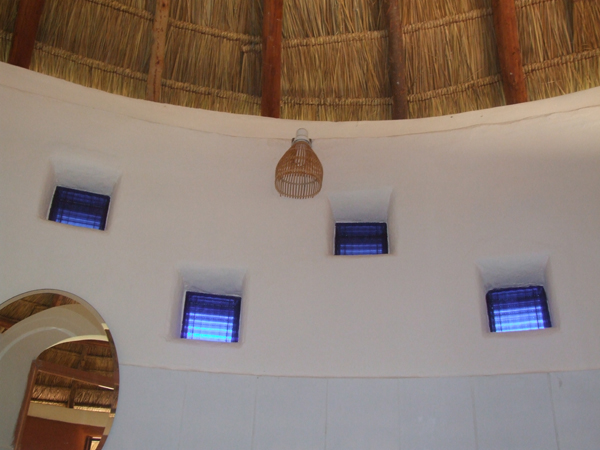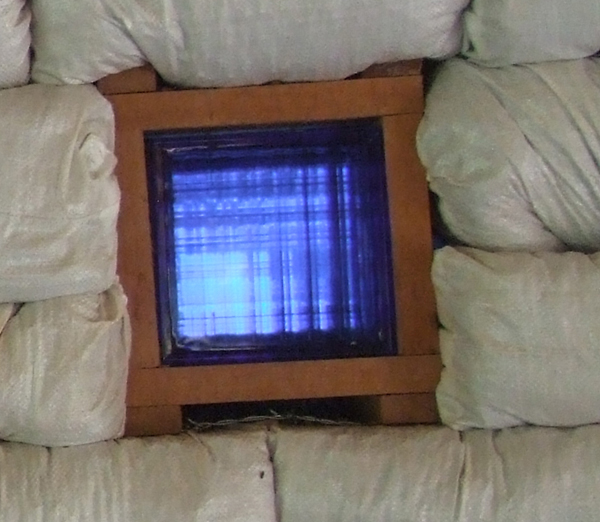
Decorative glass block adds light to bathrooms while maintaining privacy. It’s easy to set glass block in earthbag walls and other thick walls made of strawbale, cob, stone, adobe, etc. Here’s how I added glass blocks to our Earthbag Roundhouse Studio.

I made two separate 2×6 bucks just a little larger than the glass blocks for each opening. There are two bucks and two blocks per window — one on the inside and one on the outside with a gap in the center of the wall. Make the bucks with short scraps of wood if possible. Figure out how much curvature you want on the plastered edges and then put the bucks in place as you lay the bags. (Ours are 1”- 2″ from the edge of the bags.) The earthbags on each side hold the bucks firmly in place. The bucks are strong enough to support earthbags on top with no lintel, although you could add boards to create an attractive lintel. When you’re ready to set the glass blocks, add some small finish nails inside the bucks as stops so they don’t slide in too far. The plaster curves around, covers the bucks and seals the gaps. Mask off the glass to reduce cleanup later.
Video of finished Roundhouse Studio
(We’ve since replaced the thatch with 30-year red microconcrete roofing tiles.)

How well insulated are these types of windows? Every place I’ve ever been that had glass block windows had a very noticeable change in temperature around them. Drastic changes in temperature and humidity in the areas where glass block walls are employed in those buildings makes me leery of homemade windows. How do you address those issues with your own builds, Owen (or anyone else with a good answer, for that matter)?
This is in the tropics where those issues are not a concern. Every building method/idea has to be adapted to your specific climate. A double block design like this should work just about anywhere except maybe extreme cold areas.
Well, that’s true. How much space should be left between the layers of glass block, and would a third layer be an additional cost with no real energy-efficiency benefit? Last, but not least, what sealant did you use around the edges of the blocks, by chance? So many questions, I know… Thanks for the post, it’s a good idea.
Space between the blocks: follow the building process in the article. The space between the blocks is whatever distance is left over. Use caulk to seal the edges after the plaster and paint dry.
Impressive walls. What is the finish material to level the bags out?
Thanks. There’s cement plaster in the bathroom.
There are boards on the top and bottom to keep the bucks in alignment an equal distance apart.